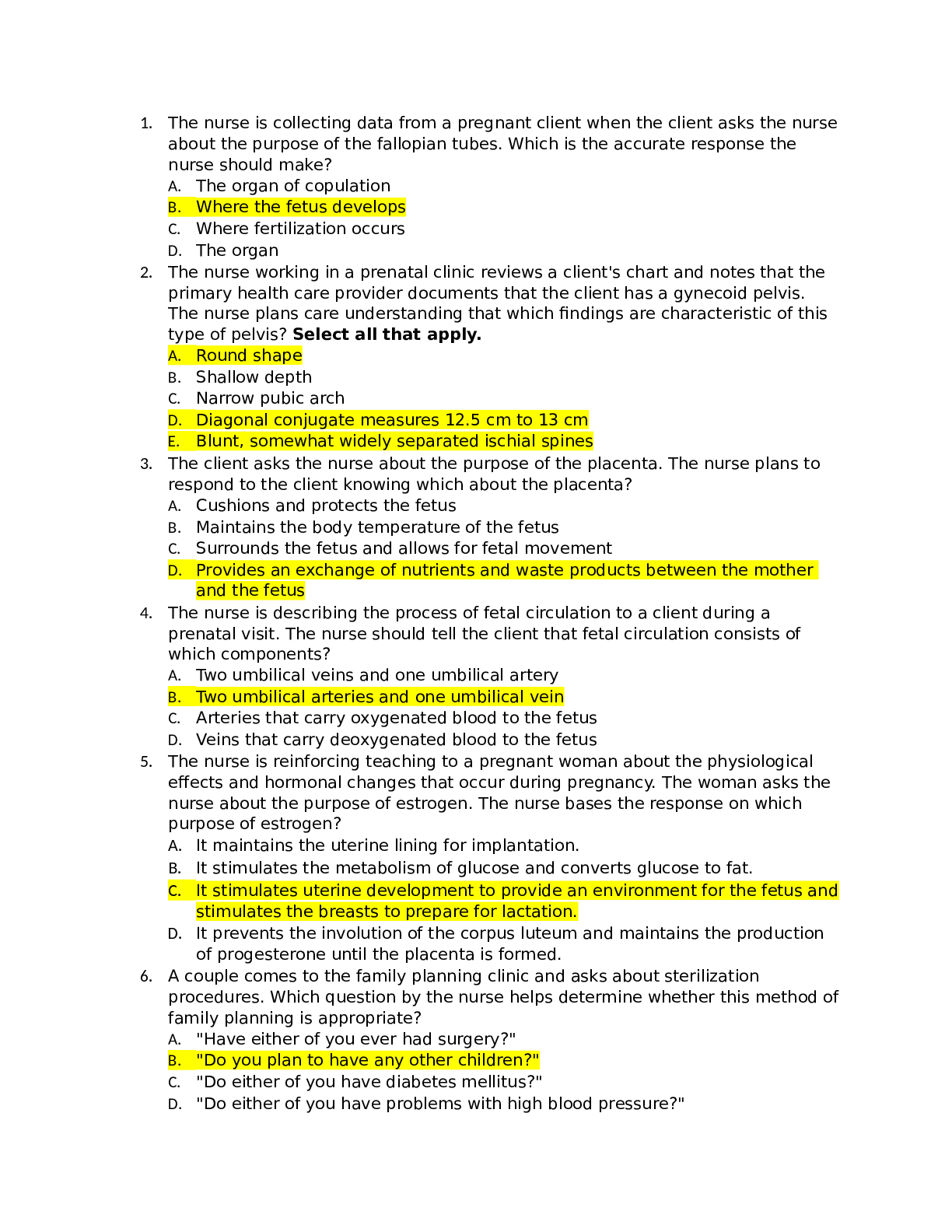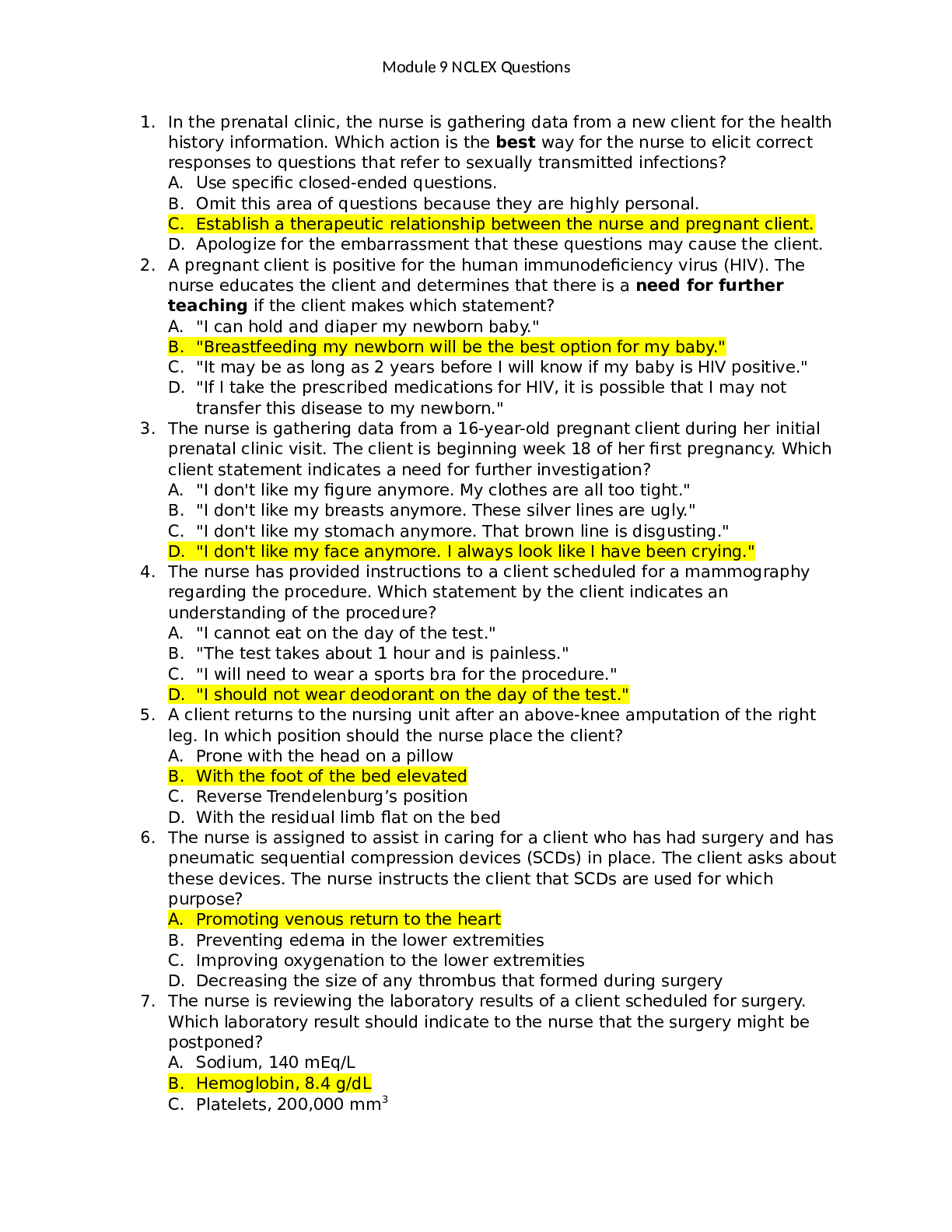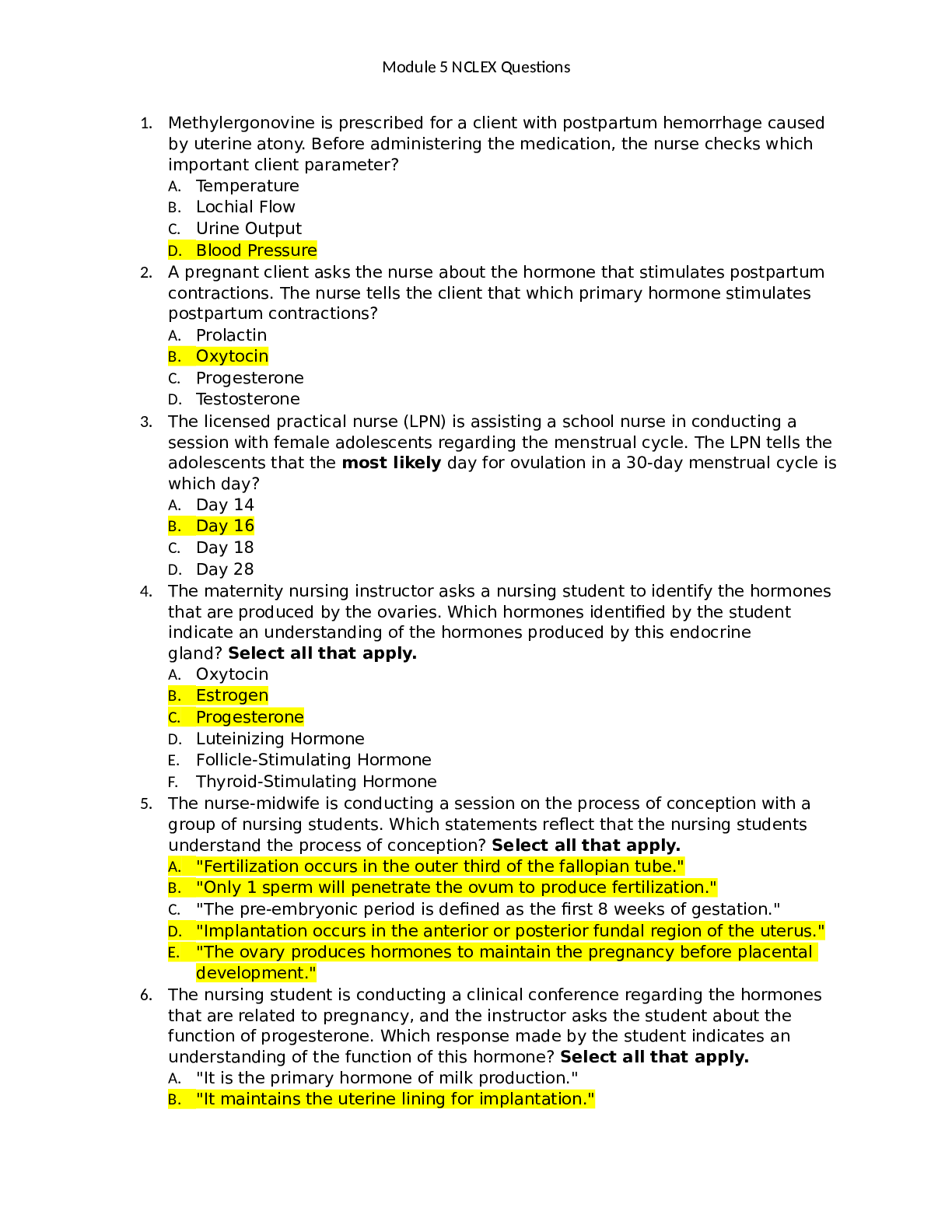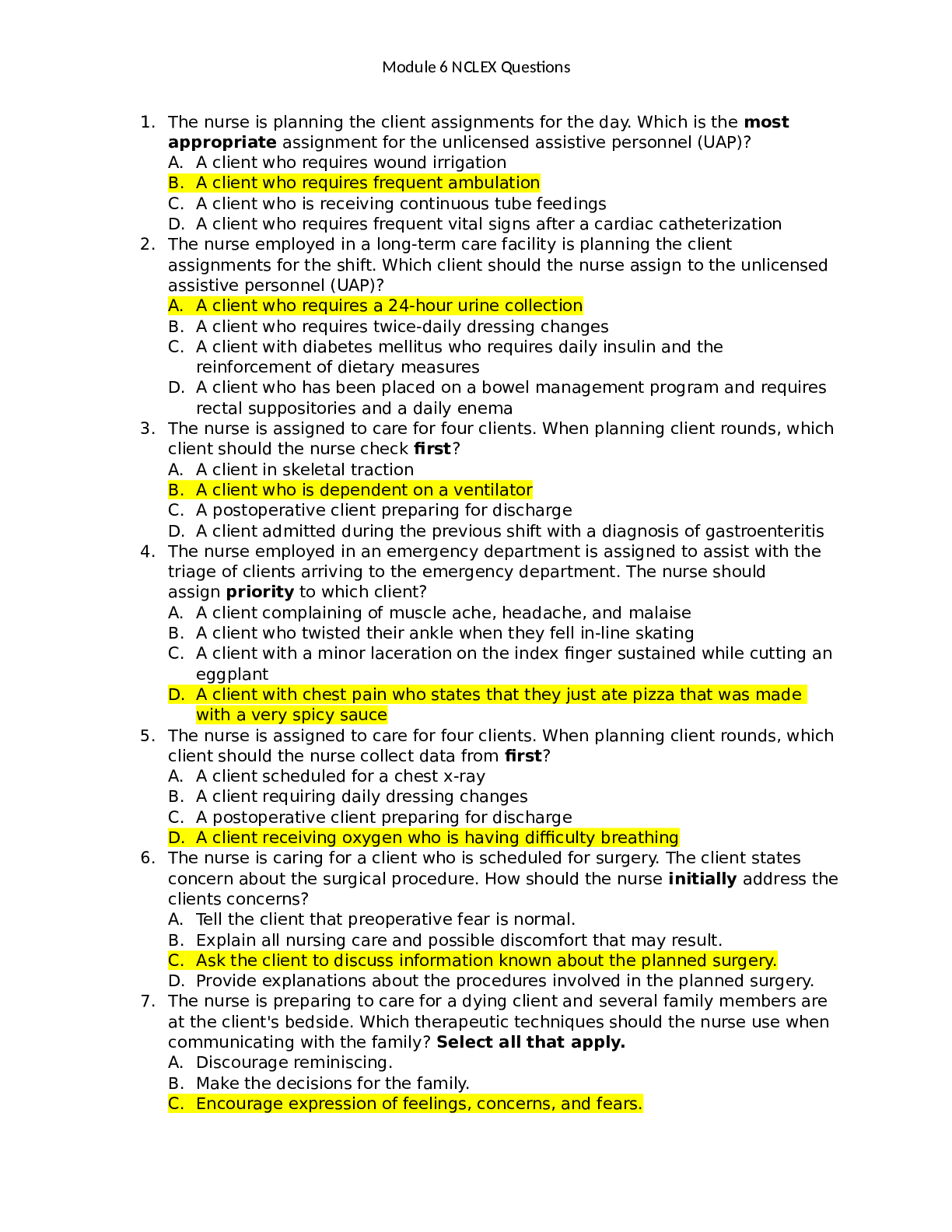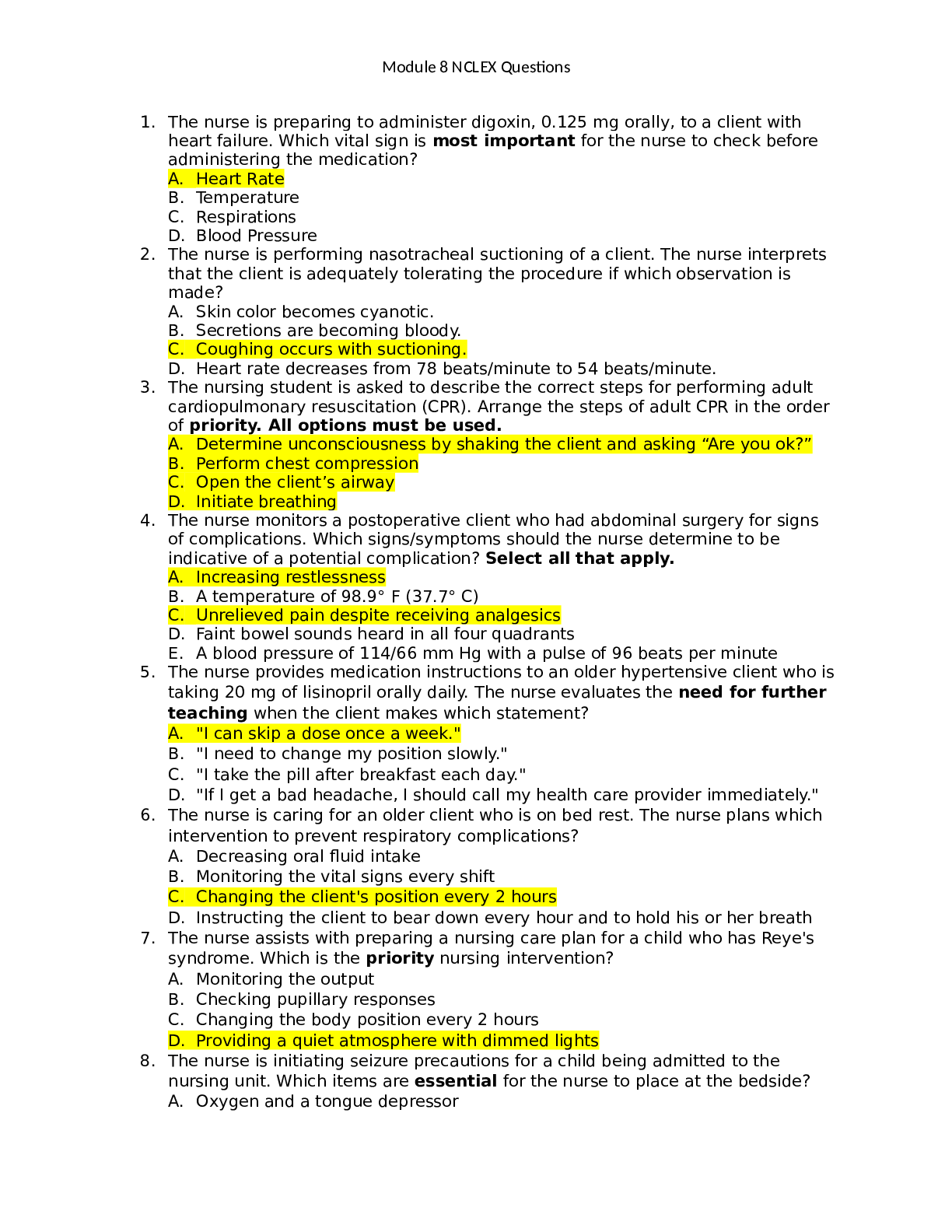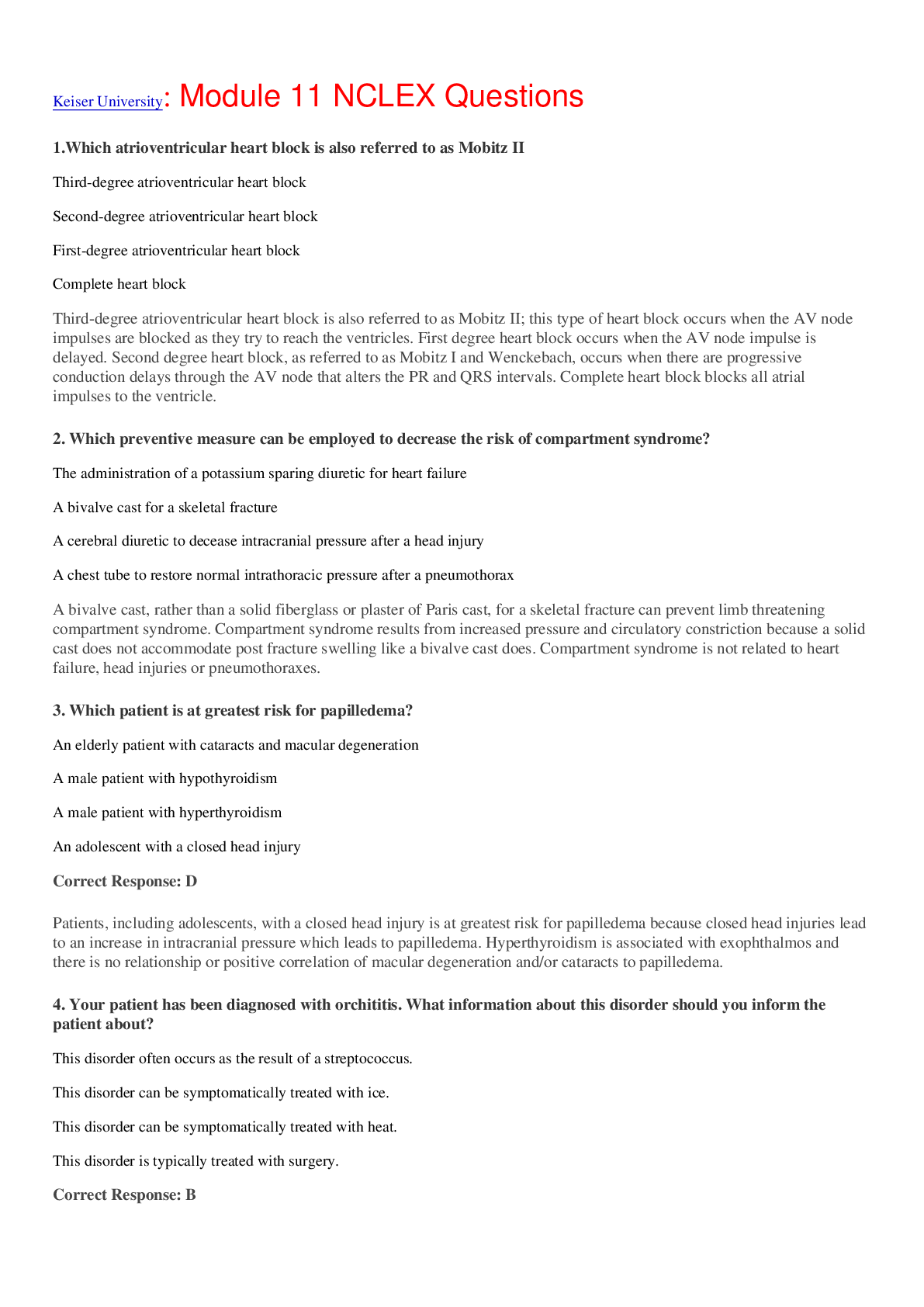NUR 2356 CLINICAL DAY 2 NCLEX QUESTIONS,100% CORRECT
Document Content and Description Below
A registered nurse (RN) is orienting an unlicensed assistive personnel (UAP) to the clinical nursing unit. The RN determines that the UAP needs further teaching if which procedure is performed by the ... UAP during a routine handwashing procedure? 1. Keeps hands lower than elbows 2. Dries from forearm down to fingers 3. Washes continuously for 10 to 15 seconds 4. Uses 3 to 5 mL of soap from the dispenser Which action should the nurse implement to obtain a urine specimen for a urinalysis from a client with an indwelling urinary catheter? 1. Cleanse the perineum. 2. Detach the tubing of the drainage bag. 3. Use a sterile container for the specimen. 4. Aspirate the urine from the drainage bag port. The nurse is discussing accident prevention with the family of an older client who is being discharged from the hospital after having hip surgery. Which physical factors place the client at risk for injury in the home? Select all that apply. 1. A night-light in the bathroom 2. Elevated toilet seat with armrests 3. Cooking equipment such as a stove 4. Smoke and carbon monoxide detectors 5. A low thermostat setting on the water heater 6. Common household objects such as a doormat The nurse assists a postoperative client from a lying to a sitting position to prepare for ambulation. Which nursing action is most appropriate to maintain the safety of the client? 1. Assess the client for signs of dizziness and hypotension. 2. Allow the client to rise from the bed to a standing position unassisted. 3. Elevate the head of the bed quickly to assist the client to a sitting position. 4. Assist the client to move quickly from the lying position to the sitting position. HEALTH PROMOTION and MAINTENANCE A home care nurse assesses an older client’s functional status and ability to perform activities of daily living (ADLs). What is the focus area of the nurse’s assessment? 1. Everyday routines 2. Self-care activities 3. Household management 4. Endurance and flexibility PSYCHOSOCIAL INTEGRITY The nurse is bathing a client when the client begins to cry. Which action by the nurse is therapeutic at this time? 1. Continue bathing the client and say nothing. 2. Stop the bath, cover the client, and sit with the client. 3. Call the health care provider to report the signs of depression. 4. Stop the bath, cover the Client, and allow the client private time. A client was just told by the primary care health care provider that she will have an exercise stress test to evaluate the client’s status after recent episodes of severe chest pain. As the nurse enters the examining room, the client states, “Maybe I shouldn’t bother going. I wonder if I should just take more medication instead.” Which therapeutic response should the nurse make to the client? 1. “Can you tell me more about how you’re feeling?” 2. “Don’t you really want to control your heart disease?” 3. “Most people tolerate the procedure well without any complications.” 4. “Don’t worry. Emergency equipment is available if it should be needed.” PHYSIOLOGICAL INTEGRITY Older residents are emotionally despondent when their homes are severely damaged by flooding. When planning for the rescue and relocation of these older residents, what is the initial item that the community nurse needs to consider? 1. Contacting their families 2. Attending to their emotional needs 3. Arranging for the repair of their homes 4. Attending to their basic physiological needs The nurse is developing a care plan for an older client being admitted to a long-term care facility. Which information should the nurse use to plan interventions for this client? Select all that apply. 1. Most older clients are incontinent. 2. Older clients are at risk for dehydration. 3. Depression is a normal part of the aging process. 4. Age-related skin changes require special monitoring. 5. Older clients are at risk for complications of immobility. 6. Confusion and cognitive changes are common findings in the older population. The nurse is caring for a client with an acute head injury. Which neurological sign should the nurse carefully assess as the primary indicator of neurological status? 1. Vital signs 2. Motor function 3. Sensory function 4. Level of consciousness [Show More]
Last updated: 1 year ago
Preview 1 out of 2 pages
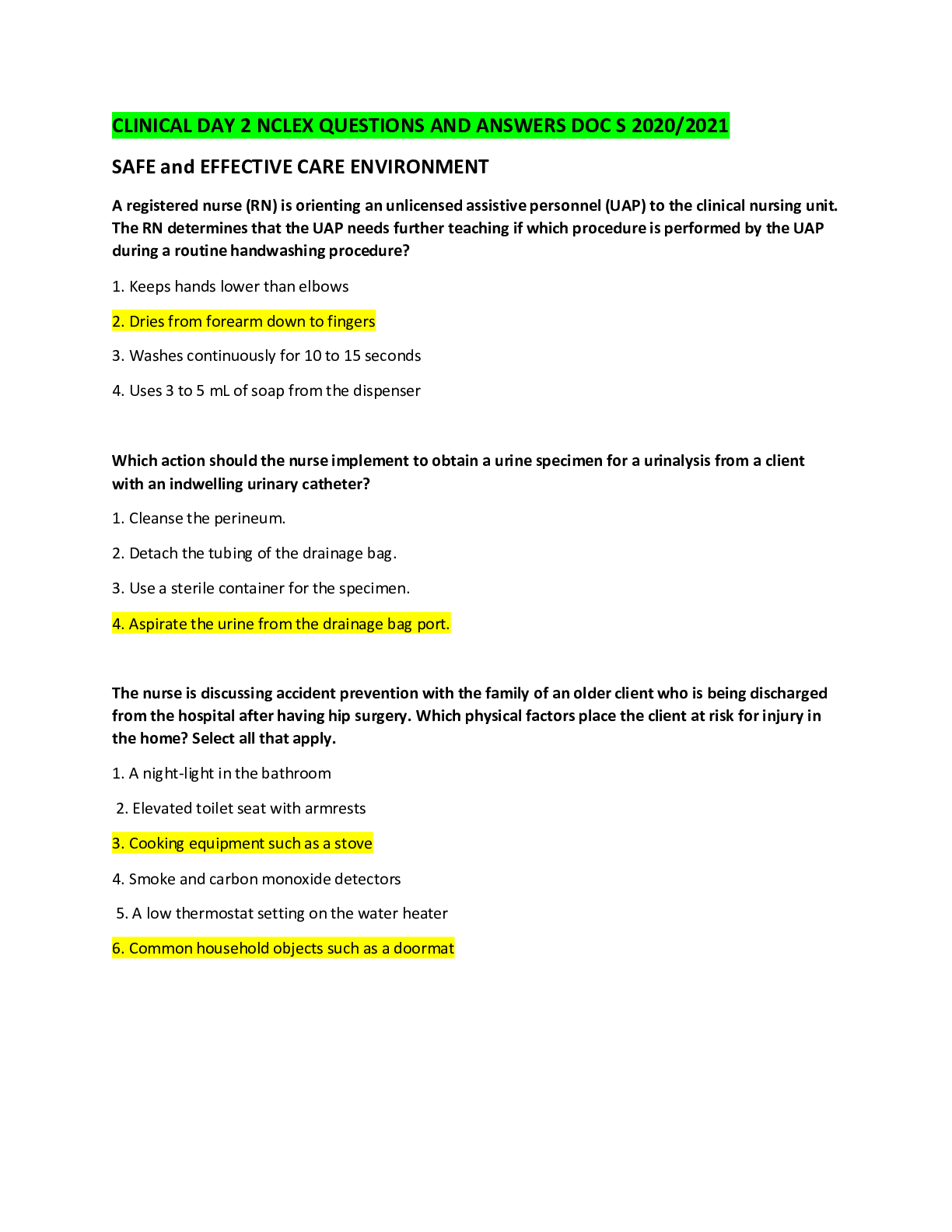
Buy this document to get the full access instantly
Instant Download Access after purchase
Add to cartInstant download
We Accept:

Reviews( 0 )
$14.00
Document information
Connected school, study & course
About the document
Uploaded On
Nov 14, 2020
Number of pages
2
Written in
Additional information
This document has been written for:
Uploaded
Nov 14, 2020
Downloads
0
Views
35















